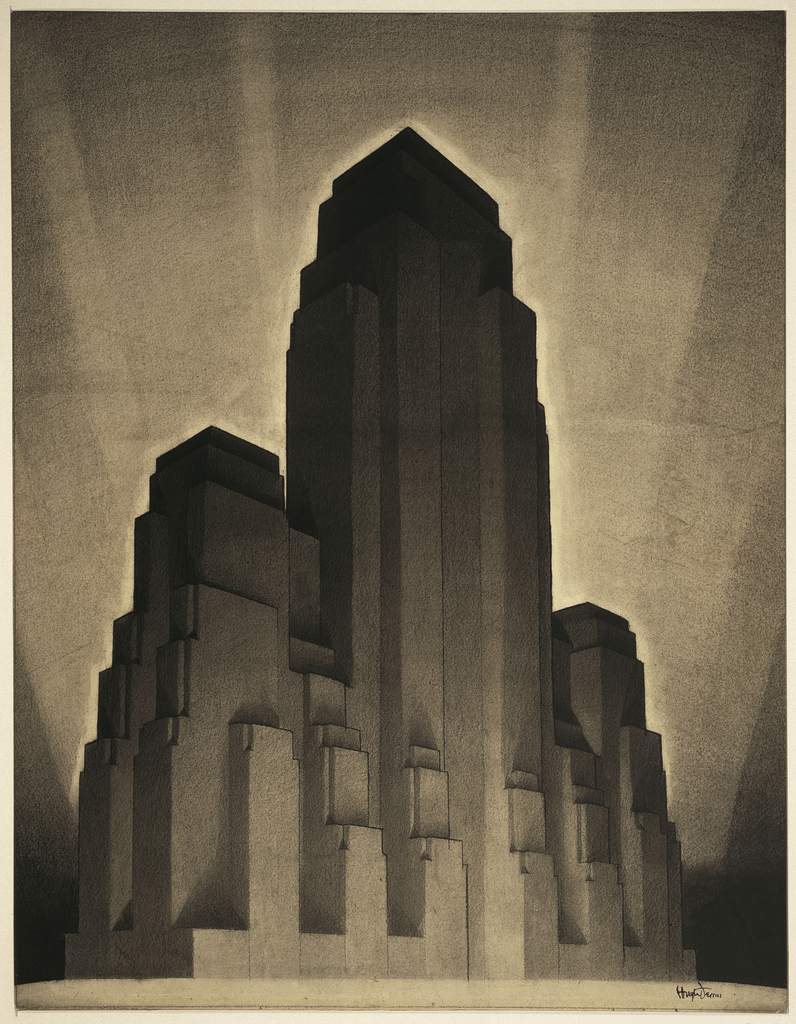“There are perfectly sober people who will tell you they have seen high buildings shimmy.”
“(Modern buildings) show their best to their devotees… (who) will point out to you a score of fleeting expressions in a façade.”
Orrick Johns. “What the Modish Building Will Wear.”
New York Times, Oct. 4, 1925.
Architect and renderer of buildings, both real and imagined, Hugh Ferriss believed his role was “to strengthen the psychological influence of architecture on human values.” His drawings, building designs, and writings put a human face on architecture.
Modern glass buildings attract the gaze. Solid mass appears ephemeral in reflection and becomes capable of movement and dissolution, in contrast to its inherent weight and gravity. The above drawing was proposed by Ferriss as a template: details could be added for a tiered or setback style to meet 1916 New York zoning laws to admit more light and cast fewer shadows. The façade is expressive, despite its lack of detail. The medium, Conté crayon, has been rubbed and blended, blurring definition in sfumato. Dynamic energy radiates across and through both façade and sky, connecting the tower with nature. The faceted sides of walls and divided rays of light elicit a Cubist or Italian Futurist feel.
Ferriss’s architecture was both romantic and prophetic: at once a utopian dream and a reminder of the potential menace lurking in tall buildings. He aimed “to make people . . . aware of the subconscious influence that the architectural environment had over human behavior.”
As an artist-in-residence (through the Lower Manhattan Cultural Council) at The World Trade Center from 1997 to 1998, I, too, became a painter of tall buildings. Every day inside that icon of immense stature, I watched flickering façades change according to the time and weather, a vast array of Rorschachian shapes. The swaying walls and dizzying elevator ride made me feel oddly unstable. When I searched for the visual equivalent of this effect, I found it in the building’s own reflection. Searching for a visual equivalent to my state of mind, the building itself in reflection gave that to me. In the drawing below, Conté crayon and charcoal provided fluid marks.

Tower 2, 24th floor, World Trade Center, Studio of Pamela Lawton, Lower Manhattan Cultural Council, 1998.

Tower 2, III. Pamela Lawton, 1998. Charcoal, pastel and Conté crayon on paper. 73 x 52 in.
